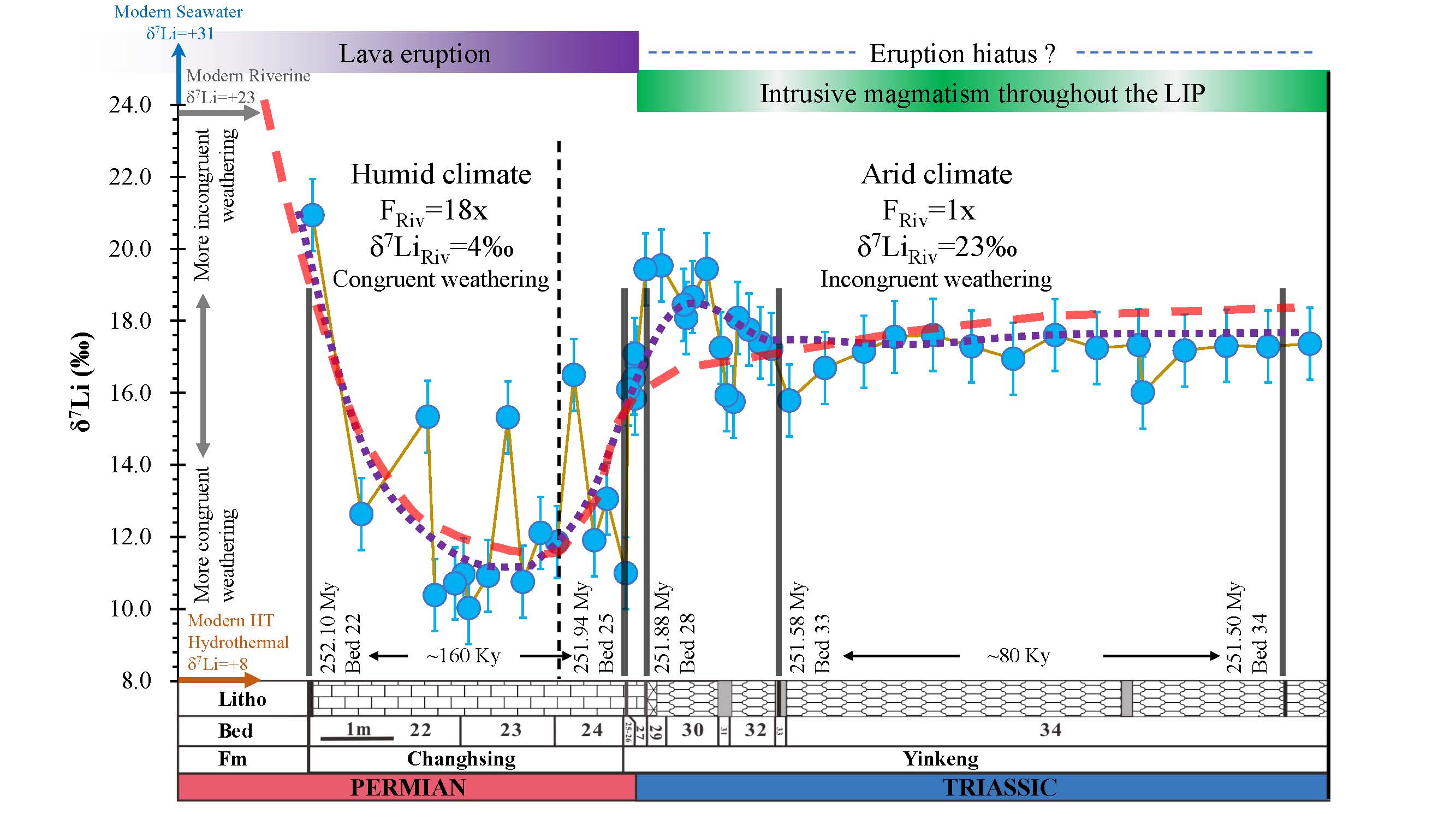About 252 million years ago, the most severe mass extinction occurred which eliminated more than 80% of all marine species and 70% of terrestrial vertebrate genera and most land plants. However, the linkage between terrestrial and marine extinction remains a mystery. Enhanced continental weathering evidenced by Li isotopic compositions may provide a key link between terrestrial and marine extinction, according to a recent study led by Drs. Xiao Yilin and Shen Yanan of the University of Science and Technology of China.
Researchers analyzed sedimentary rocks of the well-known Meishan section in South China. They found extremely light seawater Li isotopic compositions at the Permian-Triassic boundary. They suggested that continental weathering may have enhanced when the Great Dying occurred.

Fig 1 Li isotopic composition from late Permian to early Triassic at Meishan, South China
Sun and colleagues discovered that the seawater Li isotope excursion is coincident with the eruption of the Siberian Traps. They argue that enhanced continental weathering might have been triggered by the eruption of the Siberia Traps. The researchers say that enhanced continental weathering could have delivered a large amounts of nutrients into oceans. As a result, the latest Permian oceans may have become anoxic and acidic, causing ecological perturbations. The marine ecological system could have collapsed in a short geological time when toxic marine conditions persisted, leading to the end-Permian extinction. The new findings show how terrestrial and marine extinction could have been linked. The paper appears the online early edition of Proceedings of the National Academy of Sciences at http://www.pnas.org/content/early/XX.
The work was funded by Chinese Academy of Sciences, National Natural Science Foundation of China, and the “111”project.
(Edited by Song Yahui)